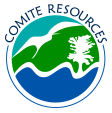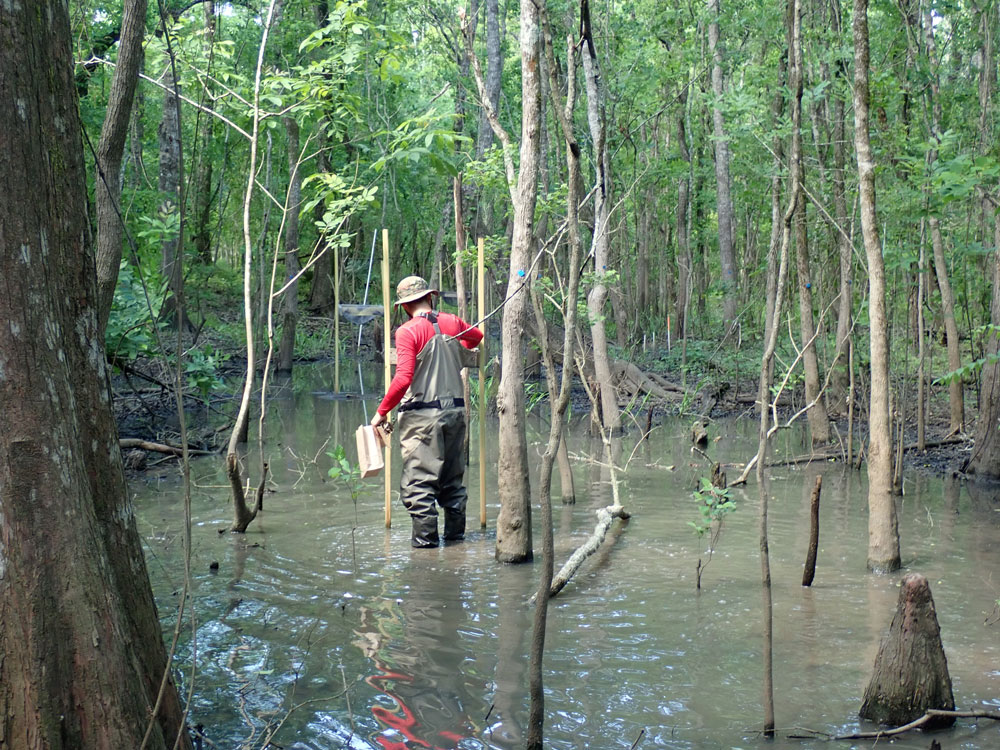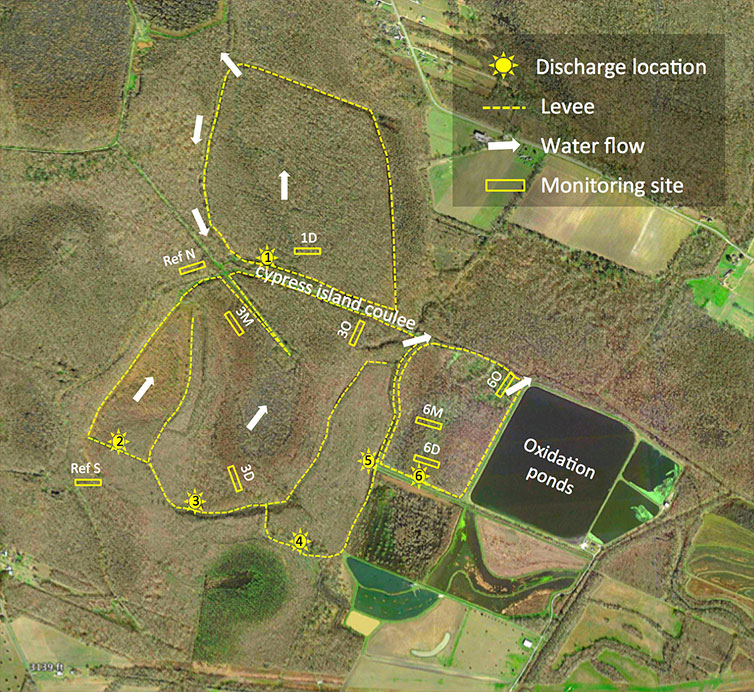The city of St. Martinville began discharging treated effluent from the city wastewater treatment facility to the Cypress Island Coulee wetlands in 2011. The treatment facility has a maximum design flow of 1.5 million-gallons-per-day, and consists of a 63.7 ha facultative lagoon with ultraviolet disinfection and a cascade aeration structure. The Cypress Island Coulee wetlands are located adjacent to the treatment facility and consist primarily of water tupelo, baldcypress, and swamp red maple. These wetlands have been degraded by conversion of surrounding areas to rice and crawfish ponds, and now consist of a number of shallow ‘ponds’ separated by low levees. Treated effluent is discharged at six different locations and surface water drains into the Cypress Island Coulee after flowing through the wetlands. Comite Resources has been carrying out wetlands assessment of the site since it was officially permitted in 2011. Environmental monitoring includes measurements of tree growth (dbh & leaf) and productivity, water hydrology, soil accretion, and nutrients and metals concentrations of surface waters, soils and vegetation. In order to monitor the effects of this discharge on the vegetation of the receiving wetlands, several sets of study sites (Discharge, Mid, and Out) were established, as well as three Reference sites located in nearby wetlands. Comite Resources visits these sites monthly to carry wetlands assessment and environmental monitoring. Below are monitoring reports from this site describing work carried out and preliminary data.
Results from several ongoing and completed studies of wetland assimilation systems in Louisiana indicate that they are achieving the ecological goals of enhancing water quality, stimulating vertical accretion, and increasing productivity. At low loading rates, nutrient reductions are high, often greater than 80%, due to plant uptake, denitrification, and burial. There are substantial economic and energy savings for small communities and non-toxic industrial processors. Wetland assimilation can provide an economically viable, effective and sustainable alternative to expensive conventional tertiary treatment while also providing wetland restoration in a subsiding coastal zone.



